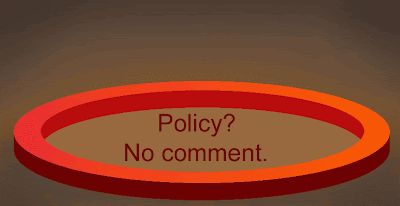

For my last post in September, I write a tribute to the mistake. Having made several mistakes this month, I feel that I should extol the virtues of this much maligned, yet salutary indicator.
Of all the things that one does in a lifetime, the mistake deserves an accolade for being among the most unwanted deeds - deliberate or accidental. It is charged with bringing embarrassment, shame and criticism to its architect, and when recognised, can be looked upon with scorn even by young children.
Metaphors and euphemisms:
There is a mountain of expressions, metaphors and euphemisms that are used for the mistake:
blemish, bloomer, blot, blotch, blue, blunder, blur, boner, boob, boo-boo, bungle, clanger, error, fault, faux pas, flaw, folly, gaffe, gaucherie, glitch, gong, hitch, horlix, howler, impropriety, indiscretion, lapse, mark, miscue, misdeed, miss, misstep, oversight, problem, slip, solecism, spot, stain, trip, typo, woopsy, wrong - the list goes on!
It is the doom of the skydiver, headache of the politician and the ruin of investors. But it does not deserve its reputation.
The mistake is the initiator of precision and perfection. Consider the supreme champions of archery and marksmanship. Who from these groups would achieve such keen accuracy and exactness without ever having made a single mistake?
Music to the ears:
Anyone who has just learnt to play even the easiest of musical instruments will be only too aware of the self-correcting quality that the mistake imparts to the custom and practice of the learner musician.
The fine ear of the soprano singer is tuned by practice in infinitesimal degrees, through which the delicate ability of the human ear picks up disharmony and imperfection, within a beat per second, in even the highest pitched musical notes.
If we were projected back in time to the days when Yasha Heifetz first scraped a tune on his violin, or Wolfgang Amadeus Mozart plonked his opening ditty on the piano, what illuminating wonders might we hear of the first and subsequent mistakes made by these celebrated virtuosos?
Darren Roberts made a list of ten ways the mistake or its consequence, failure, can be of benefit to the learner:
Encourages lateral thinking
Gives us experience
Builds character
Encourages the strong and discourages the weak!
Makes you honest with yourself
Makes one more intangible and thick-skinned
Success too soon can give false confidence
Encourages improvement and planning
Reveals your weaknesses
Success is the attitude; failure is the lever
“The person who never made a mistake never made anything,” is a Scottish adage. It implies that the mistake is part of the fundamental nucleus that is at the core of any acquisition through learning.
It becomes the hallmark of excellence by its default.
Go easy on the exponents:
As a teacher, I go easy on those who commit mistakes. I try to take care over how I address them:
May I never misjudge in speech or print
The might of that trite word but. Far from slight,
This subtle linking word is no mere hint
Of denial, but is a halting light,
A fleeting signal found among others
Far less importunate; it makes its mark
Almost unwittingly, and being terse
Can pass unnoticed like a curt choked bark,
A harbinger of prejudice expressed.
It is the stamp that damns the accolade,
The debit to annul the funds imprest,
The contempt to denounce all plaudits made:
And if before I use it I think twice,
I could save cutting a most unkind slice.
So celebrate the mistake. It fetches music to the ears, brings home celebrated champions, gives us award-winning scholars, and it put men on the Moon. It is a lesson with a possibility worthy of an "A" (attributed to Benjamin Zander).
















































